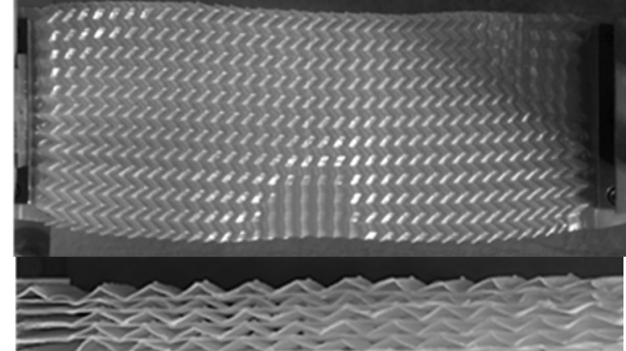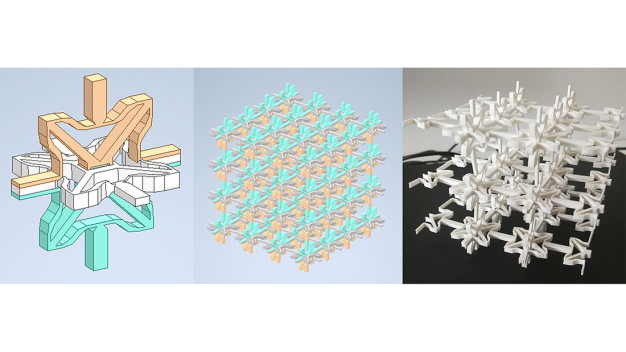- Science
Shape Change at the Push of a Button
Fraunhofer Cluster of Excellence Programmable Materials CPM
Programmable materials are true shape-shifters. At the push of a button, they change their properties in a controlled and reversible manner and adapt independently to new conditions. Areas of application include comfortable seating or mattresses that prevent bedsores. In this case, the carpet pad deforms in such a way that the contact surface is large and the pressure on the body parts is reduced as a result. Researchers at the Fraunhofer Cluster of Excellence Programmable Materials CPM are developing such programmable materials and bringing them to market together with industrial partners. One of the aims is to reduce the use of resources.
Numerous people around the world are affected by bedriddenness – whether due to illness, accident or old age. Since they are often unable to move or turn on their own, bedsores can become very painful. The aim is to prevent bedsores in the future with materials whose shape and mechanical properties can be programmed to change at any point. For example, the hardness and stiffness of mattresses made from programmable materials could be adjusted in any area at the touch of a button. In addition, the base deforms independently in such a way that a high pressure at one point is distributed over a larger area. The bed automatically becomes softer and more elastic where it presses. In addition, caregivers can specifically adjust an ergonomic lying position to suit the patient.
Material Plus Microstructuring
Materials for applications that require a targeted change in stiffness or shape are being developed by researchers at Fraunhofer CPM, which is characterized by six core institutes and aims to design and produce programmable materials. But how can materials be programmed in the first place? »We basically have two adjusting screws: the base material – thermoplastics in the case of mattresses, and metallic alloys, including shape memory alloys, for other applications – and, in particular, the microstructure,« explains Dr. Heiko Andrä, topic focus spokesperson at the Fraunhofer Institute for Industrial Mathematics ITWM, one of the core institutes of Fraunhofer CPM. »The microstructure of the so-called metamaterials is composed of individual cells, which in turn consist of structural elements such as small beams and thin shells.« While the size of the individual cells and their structural elements varies randomly in conventional cellular materials such as foams, it is also variable in programmable materials, but precisely determined – in other words, programmed.
This programming is done, for example, in such a way that pressure at a certain position leads to desired changes in shape at other points on the mattress, for example to increase the contact area and provide optimum support for the body zones.
Materials Can Also React to Heat or Moisture
The change in shape that the material should exhibit and the stimuli to which it reacts – mechanical stress, heat, moisture or even an electric or magnetic field – can also be determined by the choice of material and its microstructure. »Programmable materials make it possible to adapt objects to the respective application or person and thus to use things in a more multifunctional way than before. So they don't have to be replaced as often. This is particularly interesting against the background of resource consumption,« says Franziska Wenz, deputy topic focus spokesperson at the Fraunhofer Institute for Mechanics of Materials IWM, also one of the core institutes of Fraunhofer CPM. In addition, added value can be created by adapting objects to the individual needs of users.
The Way to the Application
A single material can replace complete systems of sensors, controllers and actuators. Fraunhofer CPM's goal is to lower the complexity of systems and reduce the use of resources by integrating functions into the material. »We always have the industrial product in mind when developing the programmable materials, so we take series production and material fatigue into account, among other things,« says Wenz. The first concrete pilot projects with industrial partners are also already underway. The research team expects that the programmable materials will initially replace individual components in existing systems or be used in special applications - such as medical mattresses, seats, shoe soles and protective clothing. »Step by step, the proportion of programmable materials could then increase,« Andrä estimates. After all, they can be used everywhere – in medical and sports articles, in soft robotics as well as in space research.
Fraunhofer-Institut für Techno- und Wirtschaftsmathematik ITWM
67663 Kaiserslautern
Germany










